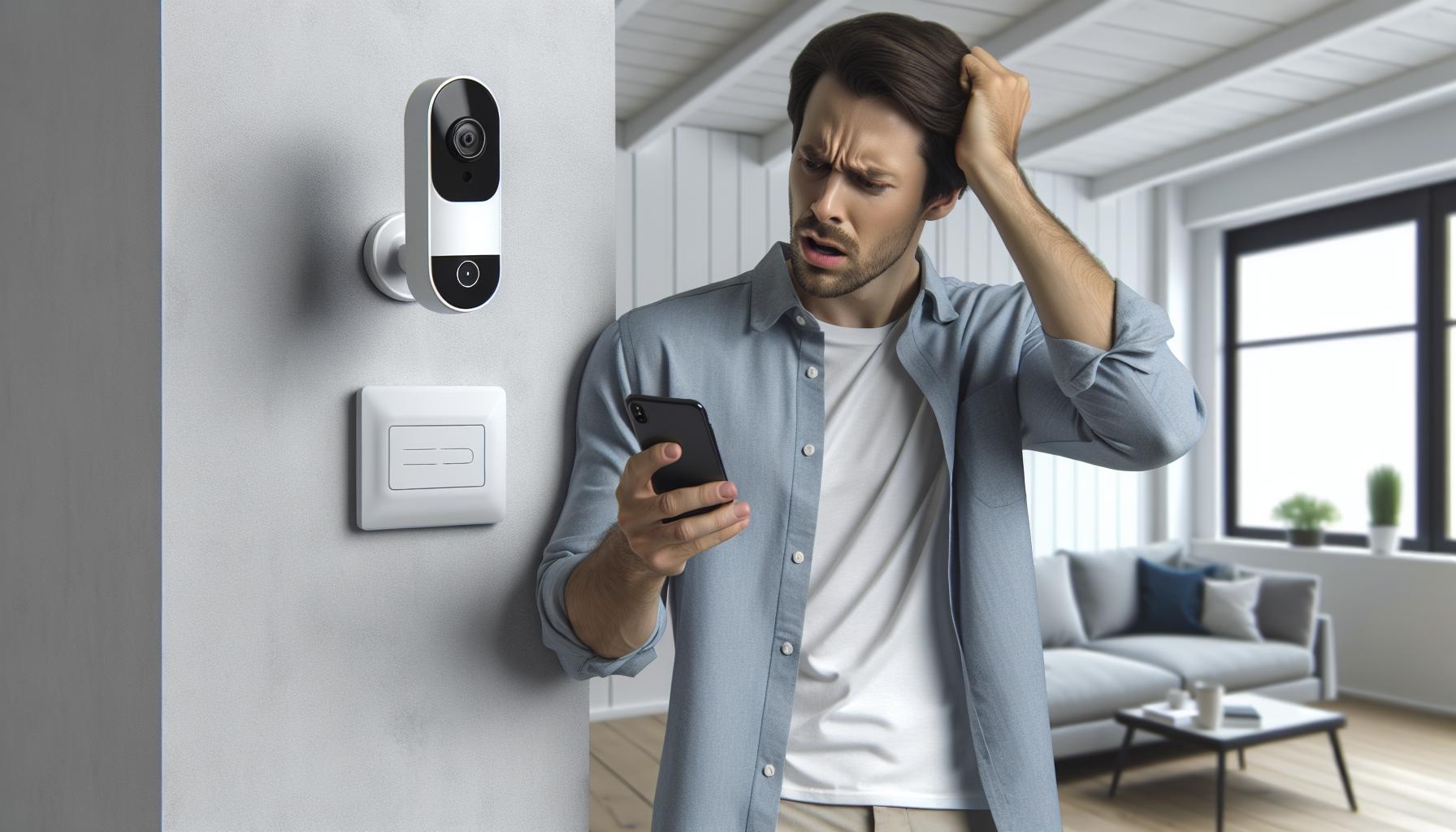In today’s fast-paced world, keeping our homes safe is more important than ever. With the rise of technology, self-monitored home security systems have become a popular choice for many homeowners. These systems empower me to take control of my home’s safety without relying solely on professional monitoring services.
I love the flexibility and peace of mind that comes with self-monitoring. Whether I’m at work or on vacation, I can keep an eye on my property through my smartphone. From cameras to motion detectors, these tools not only enhance security but also allow me to respond quickly to any potential threats. Let’s explore how self-monitored home security can transform the way I protect my home and family.
Key Takeaways
- Empowerment and Control: Self-monitored home security systems allow homeowners to take direct control of their property’s safety without relying on professional monitoring services.
- Cost-Effective Solution: These systems offer significant savings by eliminating monthly monitoring fees and providing flexible options without long-term contracts, enabling better budget management.
- Smart Technology Integration: Features like smartphone alerts, video surveillance, home automation integration, and even an AI music generator enhance security and convenience, providing real-time monitoring from anywhere.
- Proactive Security Measures: Users can customize alert settings and monitor their homes actively, leading to higher situational awareness and quicker response to potential threats.
- Challenges to Consider: Self-monitoring comes with challenges, such as limited professional support and risks of false alarms, which can lead to stress and penalties if not managed properly.
- Best Practices for Implementation: Choosing the right equipment and conducting regular system maintenance are crucial steps to ensure the effectiveness and reliability of a self-monitored home security system.
Overview Of Self Monitored Home Security
Self-monitored home security systems empower homeowners to take direct control of their property’s safety. With smartphone integration, I can access real-time alerts and video feeds from anywhere. These systems often include tools like cameras, motion detectors, and door sensors, providing comprehensive protection against intrusions.
Self-monitoring lends flexibility that traditional security methods often lack. I can customize alerts based on my preferences, ensuring timely responses to any unusual activities. This capability often leads to heightened awareness of my home environment and promotes proactive security measures.
In addition to enhancing situational awareness, self-monitored systems can save costs associated with professional monitoring services. Users often enjoy lower upfront and ongoing expenses. Some prominent features include:
- Smartphone Alerts: Receive notifications for detected events, enabling immediate action.
- Video Surveillance: Access live or recorded footage for verifiable evidence of incidents.
- Remote Control: Manage devices and settings through mobile apps, ensuring convenience and ease of use.
- Home Automation Integration: Connect with devices like smart lights and locks, optimizing home security and comfort.
Self-monitored home security not only offers protection but also builds confidence in managing my safety. With the right tools, I can effectively monitor and respond to potential threats, making it a practical choice for many homeowners.
Advantages Of Self Monitored Home Security

Self-monitored home security systems deliver several key benefits that appeal to today’s homeowners. Understanding these advantages allows me to make informed decisions about my property’s safety.
Cost Savings
Self-monitored systems incur lower costs compared to traditional professional monitoring services. Monthly fees for professional monitoring commonly range from $20 to $60, whereas self-monitoring often comes without ongoing expenses. Initial setup costs for self-monitored equipment vary but can be as low as $200 for basic packages. Furthermore, avoiding contracts provides me with the freedom to switch systems or upgrade without long-term commitments. This flexibility allows for budgeting resources toward other home improvements or needs.
Flexibility and Control
Self-monitored home security grants me complete autonomy over my property’s safety. I can customize settings and alerts to suit my specific needs. With mobile apps, I access real-time notifications, camera feeds, and system controls from anywhere. In emergencies, I respond quickly without depending on third-party monitoring. This approach increases my peace of mind, knowing that I manage my home’s security according to my preferences and schedule. Moreover, self-monitoring adapts well to various lifestyles, catering to busy professionals and families alike.
Disadvantages Of Self Monitored Home Security

Self-monitored home security systems come with inherent challenges that homeowners should consider. These drawbacks can impact overall effectiveness and user experience.
Limited Professional Support
Limited professional support often means users tackle installation and troubleshooting independently. I might encounter technical issues without access to expert advice, leading to frustration. Moreover, in the case of system malfunctions, resolving problems could take longer, increasing vulnerability. Professional monitoring services typically provide timely support and prompt solutions, unlike self-monitored systems, which rely solely on personal knowledge and resources.
False Alarms
False alarms present a common concern with self-monitored systems. I might face the risk of unintentionally triggering alarms during regular activities, causing unnecessary stress and potential fines. Frequent false alarms can also lead to desensitization or complacency regarding actual threats. In some jurisdictions, having too many false alarms can result in penalties from local law enforcement, further complicating the self-monitoring experience. Maintaining a balance between vigilance and avoidance of false alerts proves to be a significant challenge in this security approach.
Best Practices For Implementing Self Monitored Home Security

Implementing self-monitored home security requires careful planning and equipment selection. These practices ensure optimal protection for your property.
Choosing The Right Equipment
Choosing the right equipment plays a crucial role in effective self-monitoring. Start with essential components like security cameras, motion detectors, and door/window sensors. Select high-definition cameras for clear visuals, especially for entry points. Consider features like night vision and two-way audio for enhanced communication.
Invest in mobile-friendly systems that integrate seamlessly with smartphones. Prioritize products with reliable alerts and easy setup procedures. Evaluate compatibility with home automation devices to enhance security functionality further. Look for equipment that offers cloud storage options for video footage, allowing for easy access and review.
Regular System Maintenance
Regular system maintenance is vital for ensuring your self-monitored security setup continues to function efficiently. Schedule routine checks for all devices, including cameras and sensors, to confirm proper operation. Clean camera lenses regularly to prevent obstructions that could compromise image clarity.
Update software and firmware promptly to patch vulnerabilities and ensure optimal performance. Test the system’s functionality monthly by triggering alarms and checking response notifications on your mobile device. Replace batteries in wireless devices as needed to avoid system failures, ensuring uninterrupted protection.
Following these best practices strengthens home security and maximizes the benefits of a self-monitored system.
Conclusion
Self-monitored home security systems offer an empowering solution for those looking to enhance their property’s safety. With the ability to oversee my home from anywhere I can enjoy peace of mind knowing I have control over my security. The flexibility and cost-effectiveness of these systems make them an attractive option for busy lifestyles.
While challenges like false alarms and limited professional support exist, the benefits often outweigh the drawbacks. By choosing the right equipment and following best practices, I can create a robust security setup tailored to my needs. Ultimately, self-monitoring not only protects my home but also builds my confidence in managing my own safety.





